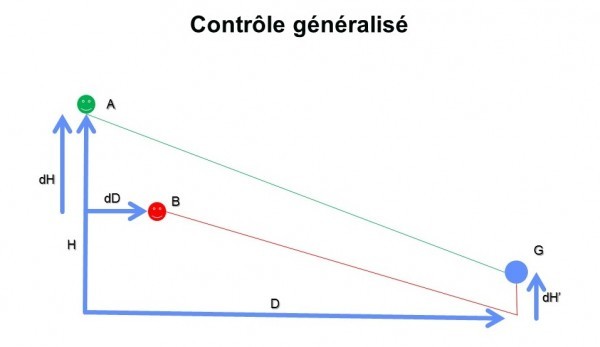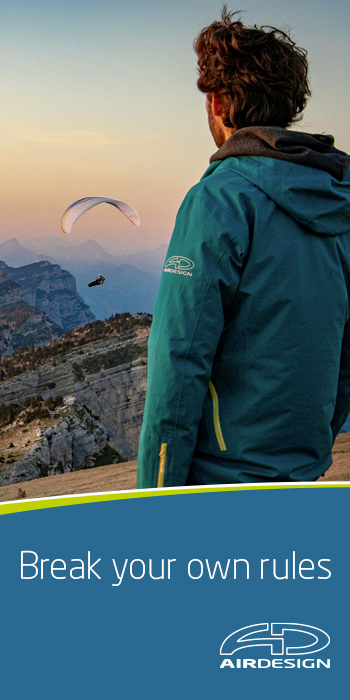
The theory of “control” in paragliding by Maxime Bellemin

During a meeting with French paragliding coaches last year, Julien described the concept of control he develops with the pilots he manages at Pôle Espoir (a college facility mixing studies and sports practice). He introduced an equation supposed to define control. This formula teased me and seemed not to be reflecting all possible situations. On the other hand, the effort to present a mathematical solution to this problem revealed a strong and positive process that deserved being thoroughly studied.

In this case, pilot A wishes to exercise a strict control over pilot B. He will fly faster than him to be sure to overtake his opponent before this guy has a chance to find a thermal. Pilot A is therefore seeking to catch pilot B further and lower on the course….

In the case presented today, pilot B adopts an optimal transition speed. This speed, as has retained the assiduous and attentive reader, varies with altitude between best glide speed and a bit faster than McCready speed, which in turn is determined by the expected climb rate climb in the next thermal. But as the pilot B has not read the good book and I need to simplify my equations, we will assume that he flies at a constant speed, that is the McCready speed…

Rationality is often a personal matter, especially as we practice a sport showing little rationality in absolute uncertainty environment. We will generalize the construction of loose control giving freedom to each pilot to adopt the speed he wants….

My first conclusion is a generality: a control situation is limited in time and space. If you are in a situation of control you must accept to gradually lose your advantage and it should motivate you to try to increase your edge, not just to manage it. Furthermore there is no unique definition of control, it can be exercised in different ways, depending on the freedom left to the pilot under control.
Illustrations : Maxime Bellemin



